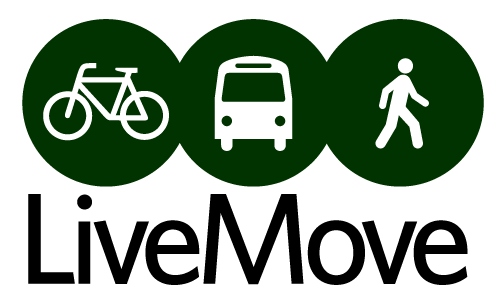LiveMove's 2016 ByDesign project, this report, is a product of the City of Eugene’s Bicycle and Pedestrian Advisory Committee expressed interest in the implementation of some form of bicycle-friendly business district (BFBD). The purpose of the project is to help inform the organization, implementation, scale, and criteria that can be considered and ultimately employed in the City of Eugene.
BFBDs are highly customizable; no two districts are exactly alike. In compiling the report, LiveMove sought to categorize certain district features based on its research, which included interviews with people who helped with district organization efforts around the country. The report organizes case studies in two ways:
- Focus.
- Community-based
- Business-based
- Organization and Implementation:
- Top-down
- Partnership
Focus refers to the nature of the district and its participation, as defined by the organizing body. Community-based districts do not require business involvement and instead delineate a commercial district in which considerable efforts are being undertaken to encourage access via bicycle. Examples often include the addition of bicycle parking, fix-it stations, and bicycle lanes. Business-based districts, on the other hand, require businesses to provide certain incentives or infrastructure for patrons or employees in order to become recognized as “bicycle-friendly.” These two forms of focus can overlap. In many cases, districts of both kinds utilize their platforms to organize community events or install bike parking.
Organization and Implementation refers to the establishment and oversight of the districts. Based on LiveMove’s research, this can range from top-down implementation, which involves a city agency as the primary lead, and partnerships, which may involve a variety of stakeholders, including community benefit districts, non-profit organizations, or business coalitions. It should be noted that the categorization functions on a spectrum and that the two are not necessarily independent of one another. In Los Angeles, for example, the Northeast LA district was implemented by LA Department of Transportation, but is actively managed by a local committee comprised of community members and organizations.
CASE STUDIES
The report provides information about some BFBDs across the country. Each case study details the process used to create the BFBD, the successes and challenges encountered, and any unique characteristics that set them apart from others. Each case study utilizes research conducted by LiveMove members online and via interviews with local leaders of the BFBD.


